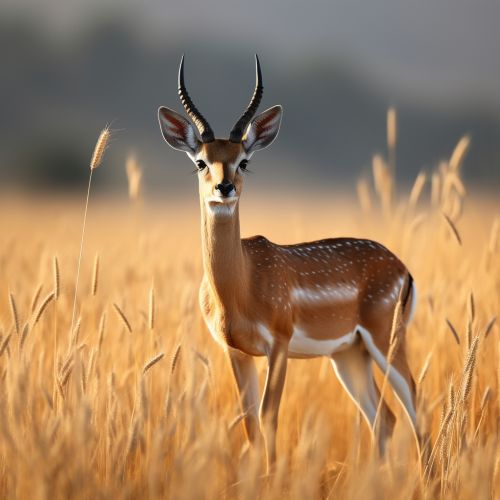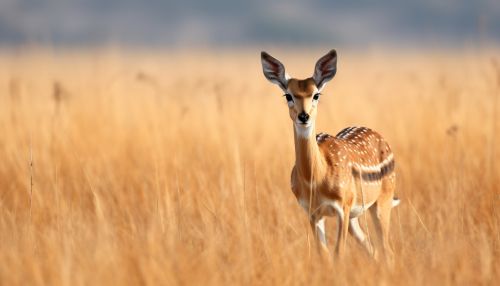Thomson's Gazelle
Taxonomy and Description
The Thomson's Gazelle (Gazella thomsonii) is a species of gazelle native to East Africa. Named after explorer Joseph Thomson, it is one of the best-known gazelles. It is considered by some to be a subspecies of the Red-fronted Gazelle and was formerly considered a member of the genus Gazella within the family Bovidae.


The Thomson's Gazelle is small and slender, with a light brown coat and distinctive black stripes running down its sides. The underparts are white, and there is a patch of white fur on the rump. The horns, present in both sexes, are long and curved, with rings along their length.
Distribution and Habitat
Thomson's Gazelles are found primarily in East Africa, including Kenya, Tanzania, and southern Sudan. They inhabit the savannas and grassland habitats, where they feed on grasses, shoots, and leaves. They are highly adapted to dry, open habitats and can survive in areas with little water.
Behaviour and Ecology
Thomson's Gazelles live in herds, which can vary in size from a few individuals to several hundred. They have a complex social structure, with adult males holding territories and females forming loose groups. The gazelles are known for their high-speed chases, with speeds of up to 80 km/h (50 mph), often in response to predation by cheetahs and other large predators.
Reproduction and Life Cycle
Thomson's Gazelles breed twice a year, with the females giving birth to a single fawn after a gestation period of about six months. The young are hidden in the grass for the first few weeks of life, with the mother returning to nurse them. The lifespan of a Thomson's Gazelle in the wild is typically 10-15 years.
Conservation Status
The Thomson's Gazelle is currently listed as "Least Concern" on the IUCN Red List of Threatened Species. However, populations are declining due to habitat loss and hunting. Conservation efforts are focused on protecting the gazelle's habitat and regulating hunting.
Cultural Significance
In East Africa, the Thomson's Gazelle is a symbol of speed and grace. It is often featured in local folklore and art. In the Western world, the gazelle is often associated with the classic image of African wildlife.
